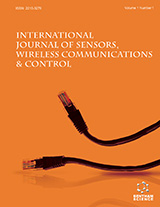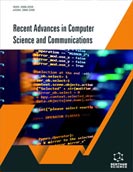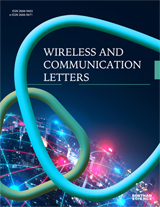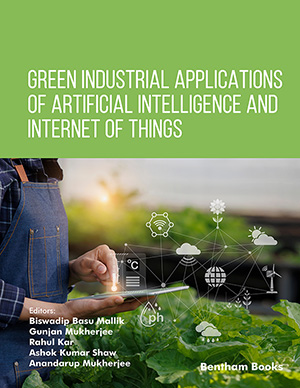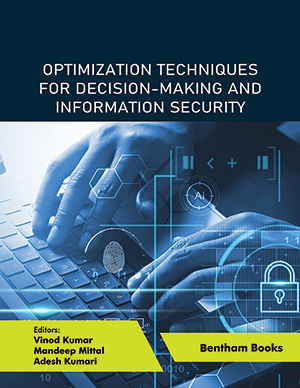
Abstract
Background: With recent improvements in fog computing, it is now feasible to offer faster response time and better service delivery quality; however, the impending challenge is to place the fog nodes within the environment optimally. A review of existing literature showcases that consideration of joint problems such as fog node placement and resource management are less reported. Irrespective of different available methodologies, it is noted that a learning scheme facilitates better capability to incorporate intelligence in the network device, which can act as an enabling technique for superior operation of fog nodes.
Objectives: The prime objective of the study is to introduce simplified and novel computational modelling toward the optimal placement of fog nodes with improved resource allocation mechanisms concerning bandwidth.
Methods: Implemented in Python, the proposed scheme performs predictive operations using the Deep Deterministic Policy Gradient (DDPG) method. Markov modelling is used to frame the model. OpenAI Gym library is used for environment modelling, bridging communication between the environment and the learning agent.
Results: Quantitative results indicate that the proposed scheme performs better than existing schemes by approximately 30%.
Conclusion: The prime innovative approach introduced is the implementation of a reinforcement learning algorithm with a Markov chain towards enriching the predictive analytical capabilities of the controller system with faster service relaying operations.
Keywords: Bandwidth, cloud computing, deep deterministic policy gradient, dynamic, fog computing, markov model, optimal node placement, resource management.
[http://dx.doi.org/10.1201/9781003188230]
[http://dx.doi.org/10.3390/telecom3010002]
[http://dx.doi.org/10.1007/s10723-019-09491-1]
[http://dx.doi.org/10.1504/IJHPCN.2018.093845]
[http://dx.doi.org/10.1109/TMC.2020.2967041]
[http://dx.doi.org/10.1109/JSYST.2021.3086150]
[http://dx.doi.org/10.1111/coin.12285]
[http://dx.doi.org/10.1007/s11042-021-11423-9] [PMID: 34690529]
[http://dx.doi.org/10.1109/COMST.2020.3020854]
[http://dx.doi.org/10.23919/JCN.2021.000041]
[http://dx.doi.org/10.1109/TPDS.2022.3148985]
[http://dx.doi.org/10.1109/JSAC.2019.2906790]
[http://dx.doi.org/10.1109/ACCESS.2020.3003249]
[http://dx.doi.org/10.1109/ACCESS.2020.2995393]
[http://dx.doi.org/10.1364/JOCN.11.000B37]
[http://dx.doi.org/10.1109/TNSM.2019.2918637]
[http://dx.doi.org/10.1109/JIOT.2019.2935056]
[http://dx.doi.org/10.1109/JIOT.2022.3143948]
[http://dx.doi.org/10.1109/JSEN.2021.3057224]
[http://dx.doi.org/10.1109/TII.2019.2952412]
[http://dx.doi.org/10.1109/JIOT.2021.3066048]
[http://dx.doi.org/10.1109/TCSS.2020.3005761]
[http://dx.doi.org/10.1109/TMC.2019.2952354]
[http://dx.doi.org/10.1109/JIOT.2019.2945066]
[http://dx.doi.org/10.1109/TII.2020.2978946]
[http://dx.doi.org/10.1109/JIOT.2020.2965009]
[http://dx.doi.org/10.1109/JIOT.2020.2964590]
[http://dx.doi.org/10.1088/1742-6596/2312/1/012087]
[http://dx.doi.org/10.1007/s00607-022-01119-9]
[http://dx.doi.org/10.1155/2018/7637059]
[http://dx.doi.org/10.1016/j.comnet.2021.108463]
[http://dx.doi.org/10.1109/ACCESS.2020.2975741]
[http://dx.doi.org/10.1007/s41870-023-01530-1]
[http://dx.doi.org/10.1080/08839514.2021.2008149]
[http://dx.doi.org/10.1007/s40747-021-00368-z]
[http://dx.doi.org/10.3390/s23020667] [PMID: 36679463]
[http://dx.doi.org/10.3390/s22041555] [PMID: 35214456]
[http://dx.doi.org/10.3390/s22145327] [PMID: 35891007]
[http://dx.doi.org/10.1007/s11036-020-01565-9]
[http://dx.doi.org/10.1186/s13677-022-00371-w] [PMID: 36465318]
 10
10 2
2


